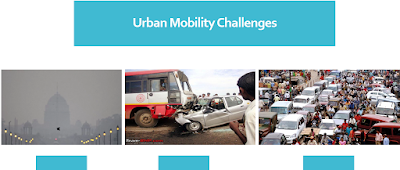Materials Innovation for Electric, Autonomous and Connected Vehicles
When I was invited to deliver the keynote address at the International Conference on Materials and Processing, I was very excited to a global audience of fellow material scientists. I decided to speak on creating a sustainable future - sustainable energy and mobility technologies. Sustainable mobility is all about creating technologies that are clean, safe and fast.
The sustainability of electric vehicles depends on the availability of the battery storage material lithium - when lithium availability becomes a bottleneck, materials scientists need to discover alternative materials for lithium or create process for effective recycling and reuse of lithium from batteries. Most motors of the electric cars need strong magnets that are made of rare earth minerals - Neodymium. When Neodymium becomes scarce, innovators need to create motor designs that can work without RE magnets or find alternative magnetic materials. Fast charging of the electric cars need Supercapacitors (aka Ultracapacitors). These supercaps need a variety of materials - metal oxides, carbon and polymers.
The Autonmous cars have a LIDAR and these are MEMS devices for laser light emision, micro mirrors and photodiodes - need semiconductors, metal oxides, metal etc. The price of LIDA has dropped from $70k to $1k in 2015 and steadily reducing further. The sensors that enable connected cars needs a variety of metal oxides and semiconductors.
The Materials Scientists have a key role to play in creating a sustainable future. The technologies that enable sustainable energy and mobility technologies have strong dependencies on certain critical materials. Innovations that open up these material bottlenecks can lay the path for a sustainable future.
The simultaneous emergence of electric vehicles and falling price of solar PV direct our attention on storage batteries - as both technologies would need them. Batteries will unite the mobility and energy industry. Lithium ion battery price is steadily falling and alternative materials are being continuously explored - promising new battery materials are in the horizon.







Thanks for the great content!
ReplyDeleteUniqwebtech - Digital marketing agency delivering the best solutions in SEO, SMO, Paid Search, Social Media Marketing and Content Marketing.
This is a very amazing post. It is also helpful for us. Thank's for sharing your article.
ReplyDeleteTop machine vision inspection system companies
At APTRON NOIDA, you can enroll in a range of .NET Training in Noida, including beginner, intermediate, and advanced levels. Whether you're looking to learn the basics of .NET programming or want to enhance your existing skills, the institute has a program that's suitable for you. APTRON NOIDA's .NET training courses cover a wide range of topics, including .NET framework, C#, ASP.NET, SQL Server, LINQ, WPF, and more. With a comprehensive curriculum and hands-on training, students gain practical experience and develop the necessary skills to excel in their careers.
ReplyDelete